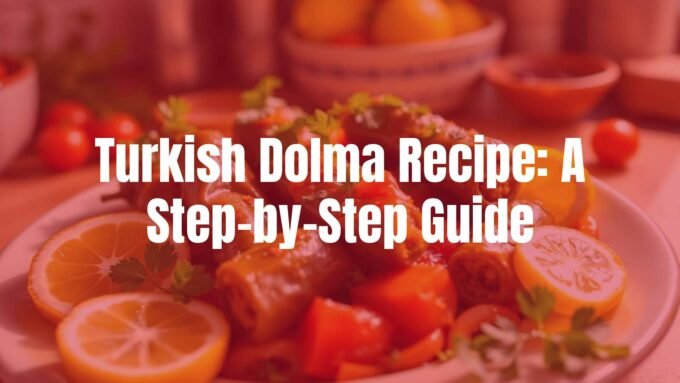Turkish bread spans a whole range of flavorful, often soft, and aromatic baked goods that are a key part of Turkish cooking. Think of bread that’s chewy, light, and smells wonderful as it’s baking-that’s Turkish bread. It’s used as a side, can be the centerpiece of the meal, or is served as an appetizer. Larger round loaves or special versions often have sesame or nigella seeds sprinkled on top, giving both crunch and a nice scent.
Many people end up loving Turkish bread after tasting it fresh at a bakery-the warm, tempting smell almost demands you try some. It tastes best while still hot or fresh, but it still works nicely for toast or as a base for dips over the next day or two. Turkish bread pairs well with many foods, from roasted meats to salads and creamy spreads, which adds to its popularity in Turkey and beyond.

Popular Types of Turkish Bread
There are several classic types of Turkish bread, each with its own style and flavor:
- Bazlama: This is a thick, round flatbread cooked on a griddle. It’s soft, puffy, and often eaten with butter or jams at breakfast, or as a side with dips. Bazlama is especially simple, with light and airy pockets inside and a crisp crust outside.
- Pide: “Pide” covers a few Turkish flatbreads, including the well-known round Ramazan Pidesi, famously eaten during Ramadan. Some are boat-shaped and can be topped like pizza, while others are plain and puffy, with a signature diamond pattern on top.
- Simit: This is a sesame-crusted bread ring, similar in shape to a bagel but with a crunchier outside and soft inside. Simit is popular as a snack or breakfast.
- Ekmek: Simply “bread” in Turkish, this term includes many regional breads, from crusty loaves to whole wheat options.
- Lavash & Yufka: These are thin flatbreads. Lavash is also eaten in other countries, but in Turkey, it works well as a wrap, while Yufka is used for dishes like Gözleme (stuffed flatbread) or Lahmacun (meat-topped bread).
These different breads are all part of Turkey’s deep bread-making traditions.

Why Make Homemade Turkish Bread?
There’s something special about bread straight from the oven, and homemade Turkish bread is no exception. The smell alone can bring to mind a busy Turkish bakery, and the taste is much fresher than anything bought in a package or from the store. Making bread at home means you control what goes in, avoid unnecessary additives, and at the same time, enjoy a fun baking project that’s not hard to try, even for first-timers.
Reasons to Bake Turkish Bread at Home
Here’s why homemade Turkish bread is worth the effort:
- Freshness: Home-baked bread is warm, soft, and at its best right after baking.
- Customization: You can control salt, add seeds, herbs, or try using different flours for your own twist.
- Cost: Baking bread yourself often costs less, especially if you make it often.
- Relaxation: Many find kneading and baking to be calming and satisfying, filling the home with a wonderful aroma.

How Turkish Bread Is Different from Other Breads
While similar to flatbreads like naan or pita, Turkish bread tends to be softer and more airy. Pide and Bazlama, for example, don’t usually have the hollow pocket that pita does. Turkish bread often uses yogurt, milk, or olive oil in the dough for extra softness and taste, while pita is mostly water, flour, yeast, and salt. Turkish bread can also be made with less kneading and has a faster rising time, making it easier for anyone to try at home. The blend of slight sweetness and savory seed toppings makes Turkish bread unique.
Essential Ingredients for Turkish Bread
Getting Turkish bread right starts with simple, common ingredients. Each ingredient helps create the classic soft, chewy crumb and light flavor. Most can be found in any supermarket, so it’s easy for anyone to make Turkish bread with what’s on hand. Here’s a look at common ingredients and their roles:
| Ingredient | Purpose |
|---|---|
| All-purpose flour | Gives a soft, fluffy base |
| Yeast | Makes the bread rise and creates air pockets |
| Yogurt | Adds tenderness and a mild tang |
| Olive oil | Adds flavor and helps keep bread moist |
| Sesame or Nigella seeds | Adds crunch and flavor |

Choosing Flour
All-purpose flour is most common, making light and soft bread. Bread flour works too and gives a bit more chew. For a heartier taste, a little whole wheat flour can be mixed in (no more than 1/3) to keep the bread from getting dense. Too much whole wheat can make the bread heavy, so use it carefully.
Yeast Basics
Most Turkish bread recipes use instant yeast, which can be mixed directly into flour. If you use active dry yeast, “bloom” it first in warm water (about 105°-110°F / 40°-43°C) with a little sugar for 5-10 minutes to make sure it’s alive and foamy. Don’t use hot water-it will kill the yeast. If the yeast is too old, bread won’t rise, so check the date on the package.
Why Yogurt and Olive Oil?
Yogurt makes bread moist and soft and gives a little tang. Greek yogurt is thicker, but you can use regular yogurt-just reduce the water a bit. Olive oil adds flavor and helps make the bread soft. It also can be brushed on before baking for a nice color.
Classic Toppings
White and black sesame seeds add nutty taste and crunch. Nigella seeds add a light onion-like flavor. These toppings aren’t just decoration-they boost the bread’s traditional taste. Other optional toppings might include Turkish red pepper (pul biber) or herbs.
Substitutions for Special Diets
- To make vegan Turkish bread, skip egg yolk in the glaze and use plant-based milk or yogurt.
- For gluten-free bread, try gluten-free flour blends. The result will be denser, and won’t have the chewy bite of regular Turkish bread, but it’s still worth trying if needed.
Step-by-Step Turkish Bread Recipe
Let’s go through the main steps for making Turkish bread at home. This process is simple enough for anyone to try, especially if you follow it step by step:
Step 1: Activate the Yeast
If using active dry yeast, mix it with warm water and a pinch of sugar and let it rest for 5-10 minutes. If it bubbles, it’s ready to use. Instant yeast can go straight in with the flour, but the liquid must be warm, not hot.
Step 2: Make and Mix Dough
In a big bowl, add flour and salt. Stir in water (and milk/yogurt if used), plus the yeast. Mix with a spoon, then finish by hand until it comes together. The dough will be soft and a bit sticky-don’t add too much extra flour or the bread will become heavy. Knead just until everything is mixed well.
Step 3: First Rise
Oil the bowl, turn the dough to coat, cover with plastic or a damp towel, and leave in a warm place. The dough should double in size, which takes 45-60 minutes. Letting it rise slowly gives it better texture.
Step 4: Shape and Second Rise
Punch down the dough gently, put it on a floured counter, and shape it into a round or oval. Place it on a baking tray with parchment. Cover and let it rise again for 20-45 minutes until slightly puffy. This second rise helps create the fluffy middle.
Step 5: Pattern, Glaze, and Seed
Use your oiled fingertips to make indentations around the edge and a diamond or crisscross pattern on top. Brush with olive oil or a mix of egg yolk and yogurt, then sprinkle seeds. Press them gently so they stick.

Step 6: Bake
Put the dough in a hot oven (400°F/200°C or higher). Bake for 13-25 minutes until golden brown and firm. Tap the bottom; if it sounds hollow, it’s ready. For extra softness, cover the fresh bread with a damp cloth out of the oven. Let it cool a little before eating.
Tips for Making Turkish Bread
Following these tips will get you even closer to soft, fluffy, and crisp Turkish bread:
- Make sure your yeast is fresh and that your liquids are warm to help the bread rise well.
- Don’t rush the rise-let the dough double each time for better texture.
- Using yogurt or milk makes for a softer, richer bread.
- A hot oven helps create a crispy crust.
- For more crust, bake with a tray of water in the oven for steam.
- If your dough is too sticky, add flour a tablespoon at a time. If stiff, add a teaspoon of water at a time.
- Handle sticky dough with a little olive oil on your hands instead of extra flour to keep it soft.
Popular Types of Turkish Bread
Besides the basic flatbread, here are some well-known Turkish bread types:
- Ramazan Pidesi: Special for Ramadan (but eaten year-round), this bread is round, soft, and fluffy, with a golden crust and a crisscross pattern. Perfect for dipping in oil or with stews.
- Bazlama: A soft, thick, and round griddled bread. Great with butter at breakfast or as an accompaniment to main dishes.
- Simit: Sesame-crusted rings, usually crunchy on the outside and chewy inside. Sold by street vendors and eaten with cheese or tea.
How to Serve Turkish Bread
Turkish bread goes with almost everything. Here’s how it’s usually enjoyed:
- Breakfast: With butter and jam, cheese, olives, tomatoes, and cucumbers.
- With Eggs: Works well with dishes like Menemen (eggs with tomatoes) or Çılbır (yogurt-poached eggs).
- As a Side: Best for soaking up soups, stews, and sauces.
- With Mezze: Scoop up dips like hummus, baba ghanoush, or haydari (herbed yogurt dip).
- For Sandwiches: Thick Turkish bread can hold fillings like grilled meats, chicken, veggies, or falafel.

Pairing with Mediterranean Foods
Turkish bread is tasty with olive oil, tagines, lentil soups, and salads. It’s also nice with kebabs, grilled seafood, or rice dishes.
How to Store and Reheat Turkish Bread
Fresh bread is always best, but here’s how to keep leftovers soft and tasty:
Short-Term Storage
- Wrap bread tightly in plastic or foil to stop it from drying out.
- Keep at room temperature for up to 2 days-avoid the fridge, which makes it get stale quickly.
Freezing and Thawing
- Let bread cool fully.
- Wrap each loaf in plastic and foil, then put in a freezer bag.
- Freeze up to 2-3 months. Thaw at room temperature before reheating.
Reheating Tips
- Warm in a 350°F (175°C) oven for 5-10 minutes, wrapped in foil for softness, or unwrapped for a crispier crust.
- You can also reheat flatbreads in a skillet.
- A toaster oven revives slices nicely.
Frequently Asked Questions about Turkish Bread Recipe
Why Did My Bread Turn Out Dense?
- Inactive/old yeast or water that’s too hot or cold can cause dense bread. Use yeast that foams or bubbles when mixed with warm water.
- Using too much flour makes dough stiff-aim for a soft, slightly sticky dough.
- Not giving enough time for proofing can also make heavy bread. Let dough double in size for both rises.
Can I Make Turkish Bread Gluten-Free?
- Traditional Turkish bread uses wheat, so it has gluten. Gluten-free flour blends can be used but give different results-your bread will be denser and less chewy.
- Check recipes built for gluten-free flours for best results.
Should I Use an Egg Wash or Yogurt Glaze?
- Egg wash (egg yolk and water or milk) gives a glossy, deep golden crust.
- Yogurt glaze (often mixed with egg yolk) adds color and a softer crust.
- For vegan bread or to skip eggs, brush with olive oil for color, flavor, and to help seeds stick.
All these glazes will help your bread hold onto classic sesame and nigella seeds and provide a great finish.
















Leave a comment